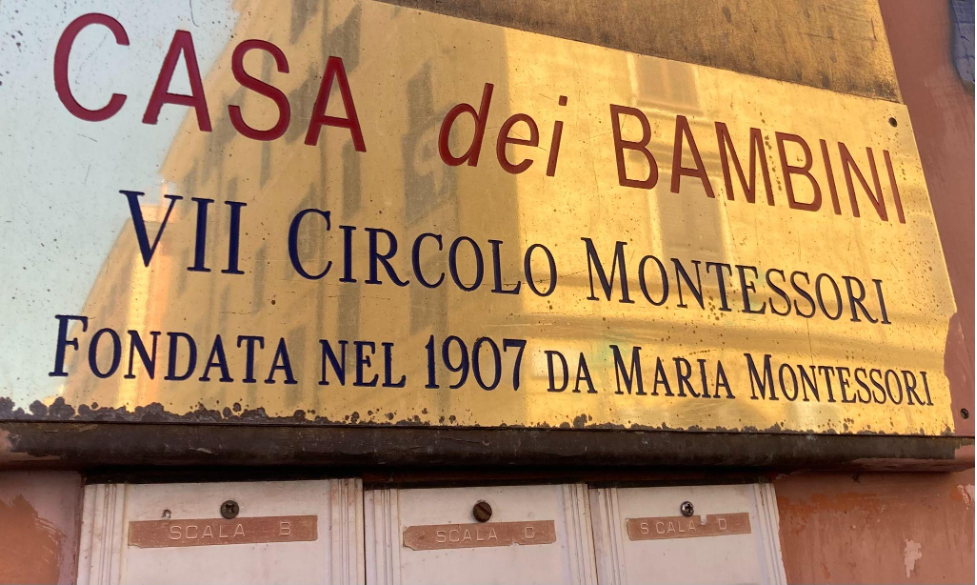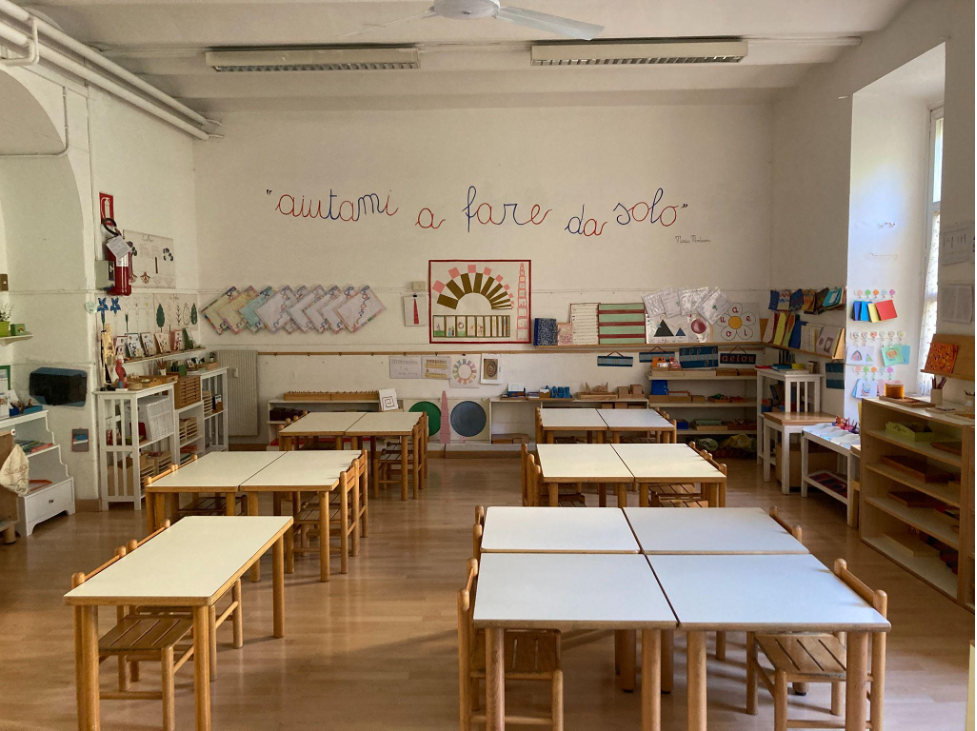san lorenzo
This special type of school was christened with the charming name of Casa dei Bambini, Children's House. The first of these was opened on January 6, 1907, on the Via dei Marsi, 53, and I was entrusted with the responsibility of its direction. I perceived the social and educational importance of such an institution in all its immensity, and I insisted upon what at the time seemed to be an exaggerated vision of its triumphal future; but today many are beginning to understand that what I foresaw was true.
Maria Montessori, The Discovery of the Child
In 1906 Dr. Maria Montessori was invited to establish a childcare center in a disadvantaged area of Rome in which most, if not all, of the children had never previously experienced any type of educational support. By all accounts, the community was desperate for someone to exert some level of control on children who seemed to run wild during the long working hours while their parents labored in low income employment. We can certainly appreciate that in the early 1900s, discipline was a distinctive feature of public education across Europe. Having recently judged an international competition on the topics of experimental psychology and scientific pedagogy, Dr. Montessori’s energy and commitment to children’s development must have aroused interest in her as a potential director of the project. She opened the doors to the center on January 6, 1907, calling it the Casa dei Bambini—Italian for “Children’s House.” Can you imagine just how excited I was to place my own hand on that very same door handle recently, during a visit to Rome?
The district of San Lorenzo had attracted thousands of people who were hopeful of participating in the construction boom of Italy’s capital city, but who were struggling hard to rise from poverty. Artisans, maids and beggars lived alongside petty criminals and the unemployed in large tenements without water and without a sewer system. A crisis in the construction industry between 1884 and 188 had left many buildings incomplete and a resulting hygiene/health crisis. Without adequate means to make a living, families succumbed to tuberculosis, rickets and cholera. Infant mortality rates were high and records of the time suggest that only half of the district’s population lived beyond the age of twenty three years.
The "Quartiere di San Lorenzo" became known as the shame of Italy. People were too afraid to do anything about it; no one knew what happened within those dark walls. There were no small shops for provisions anywhere near, no itinerant vendor would go there to sell. Even the lowest labourer, or the poorest fisherman would seem as princes in comparison, for however poor, they would have at least some honest livelihood whereas those who lived inside that gloom had no work, no means to pay, their only livelihood was derived from crime.
- Maria Montessori
When the Bank of Italy sponsored an initiative to reclaim and redevelop the area at the turn of the century, this also presented an opportunity to bring a degree of improvement into the lives of its residents through social reforms such as childcare programming. The Children’s House required a level of commitment on the part of families that included upkeep of the building as a whole, regular attendance on the part of the child and weekly meetings between the parents and Dr. Montessori. It was effectively a collective property.
I don't know what came over me but I had a vision and, inspired by it, I was inflamed and said that this work we were undertaking would prove to be very important and that some day people would come from all parts to see it.
- Maria Montessori
Dr Montessori was not able to be present in this learning environment every day. She employed an assistant to oversee the fifty children, who were offered a selection of sensorial materials that were originally used in Montessori’s earlier studies with developmentally challenged children. In the first Children’s House, there were also many activities of practical life (designed to promote pride of ownership among the children, as well as to support the development of both fine and gross motor control). Dr. Montessori visited this building as often as she could, but advised her assistant to interfere as little as possible, so that the natural urges and tendencies of the children could be given the freedom to emerge. And this, they did. Over time, the children began to experience a meaningful life in this space; their behavior modified accordingly. The process known as “normalization” began to reveal itself in the premises at San Lorenzo.
The children were quiet, they had no interference either from the teacher or from the parents, but their environment contrasted vividly from that which they had been used to; compared to that of their previous life; it seemed fantastically beautiful. The walls were white, there was a green plot of grass outside, though no one had yet thought to plant flowers in it, but most beautiful of all was the fact that they had interesting occupations in which no one, no one at all, interfered. They were left alone and little by little the children began to work with concentration and the transformation they underwent was noticeable. From timid and wild as they were before, the children became sociable and communicative. They showed a different relationship with each other, of which I have written in my books. Their personalities grew and, strange though it may seem, they showed extraordinary understanding, activity, vivacity and confidence. They were happy and joyous.
- Maria Montessori
The news spread and the whole world became interested in this phenomenal activity of writing of these children who were so young and whom nobody had taught. The people realized that they were confronted by a phenomenon that could not be explained. Besides writing, these children worked all the time without being forced by anyone to do so. This was a great revelation but it was not the only contribution of the children. It was also they, who created the lesson of silence. They seemed to be a new type of children. Their fame spread and in consequence all kinds of people visited the House of Children, including State ministers and their wives, with whom the children behaved gracefully and beautifully, without anyone urging them, that even the newspapers in Italy and abroad became excited.
- Maria Montessori
Aiutami a fare da solo. Help me to do it by myself.
Today, the original Children’s House still operates as a functioning Montessori environment, under the auspices of the Italian state schools. The area of San Lorenzo has become known as a student hub in the city of Rome, imbued with the flavor of bohemian culture and eclectic community. Boutiques and cafés that have flourished in the district have given the neighborhood a gritty charm that is appreciated by young Romans or tourists who choose to avoid the more typical attractions. Evidence of San Lorenzo’s industrial past can be seen in the repurposed factories, which serve to create a lively backdrop to the everyday life of its residents. Yes, there is graffiti on the wall surrounding the brass plaque dedicated to Maria Montessori’s first official learning environment; somehow this seems in keeping with the history of the place.
Via dei Marsi was embraced by Maria Montessori due to the potential she witnessed in the people of the area. This is a reminder to Montessori educators that our outreach belongs in all aspects of social reform, and should be rooted in the acknowledgement that every child deserves the opportunity to receive a quality education. Children reveal their potential to us every day. Our mission is to remain open to seeing every child with an open mind and an open heart.
It is not possible that it came because of my method, for at the time my method did not yet exist. This is the clearest proof that it was a revelation that emanated from the children themselves.
Maria Montessori






